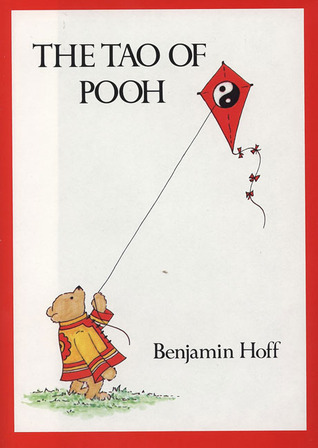Pooh Discovers Tao in ‘The Vinegar Tasters’
byThe Vinegar Tasters offers a playful yet insightful introduction to the Taoist philosophy through a whimsical dialogue between the narrator and Pooh. As Pooh expresses curiosity about Taoism, which he has heard of but doesn’t fully understand, the narrator crafts an imaginative journey to China to clarify this concept. They find themselves in a small shop full of allegorical scrolls and stumble upon a painting titled “The Vinegar Tasters.” This artwork features three significant figures—Confucius, Buddha, and Lao-tse—each representing a key philosophical teaching in China. The figures are depicted tasting vinegar, which symbolizes the essence of life, with their varying reactions serving as an allegory for their differing views on the nature of existence. The painting allows the reader to explore how these philosophies interpret life’s inherent difficulties and offer solutions for how to approach them, particularly through the lens of Taoism.
The painting illustrates the contrasting philosophical views of Confucius, Buddha, and Lao-tse, with each figure offering a unique perspective on the taste of vinegar. Confucius, portrayed with a sour expression, reflects his belief that life is misaligned with the traditions and values of the past. For Confucius, life’s bitterness comes from societal disarray, and he advocates for a return to ritual, respect for ancestors, and a deep reverence for traditional customs as a way to restore harmony. His teachings emphasize the importance of order, structure, and respect for established norms, believing that societal imbalance results from neglecting these practices. In Confucius’ view, the sourness in life can only be mitigated by adhering strictly to rules and principles passed down from previous generations, which is the only way to achieve stability and peace in the world.
Buddha, depicted with a bitter expression, represents a view of life rooted in suffering and dissatisfaction. He teaches that life is filled with pain and suffering caused by desires and attachments, which bind individuals to the cycle of rebirth and prevent them from attaining inner peace. Buddha’s philosophy revolves around the concept of Nirvana—freedom from suffering, where one transcends the cycle of craving and attachment. The bitterness Buddha experiences in the painting reflects his belief that life is inherently marked by dissatisfaction, and the key to overcoming this is through spiritual detachment and the elimination of desires. Buddha’s approach focuses on attaining enlightenment through mindfulness, meditation, and the pursuit of self-awareness, ultimately seeking freedom from the continuous cycle of birth and suffering. In his view, the bitterness of life can only be resolved by breaking free from attachments and seeking peace in the transcendental state of Nirvana.
In contrast, Lao-tse’s portrayal with a smile as he tastes the vinegar provides a radically different view of life. Lao-tse’s teachings, at the heart of Taoism, suggest that life is inherently harmonious when one aligns with the natural order, or the Tao. Rather than seeing life through the lens of bitterness or sourness, Lao-tse advocates for living in simplicity and flow with the natural world. Taoism teaches that true happiness comes from yielding to the natural flow of life, understanding that everything has its own time and place in the universe. Lao-tse’s smile suggests that life, when accepted without resistance, is sweet and fulfilling, as it flows naturally according to the Tao. Unlike Confucius and Buddha, who seek to impose structure or transcend life’s difficulties, Lao-tse encourages embracing life as it is, learning from its experiences, and finding peace in simplicity and spontaneity. His teachings emphasize that the key to understanding life’s essence lies in harmony with the Tao, a force that governs the universe and guides us to a balanced existence.
The narrator uses this contrast to explain the Taoist philosophy to Pooh, helping him understand the importance of accepting life as it is. Pooh, with his innocent simplicity, struggles to grasp the connection between vinegar and the concept of life’s sweetness. The narrator explains that Taoism suggests a transformation of perception, where negative experiences, such as bitterness, can be viewed positively when approached with the right mindset. Lao-tse’s teachings encourage individuals to embrace life’s challenges and uncertainties, seeing them as opportunities for growth rather than obstacles to avoid. This shift in perspective is central to Taoism, which proposes that life itself, when experienced in harmony with nature and without undue resistance, is inherently sweet. The chapter highlights that by aligning oneself with the natural flow of life and understanding that each experience has value, even the most challenging aspects of life can become sources of wisdom and joy.
The chapter concludes with Pooh pondering the teachings of Taoism and his humorous remark about the concept of vinegar. This lighthearted exchange underscores the essence of Taoism: the ability to find joy and simplicity even amidst philosophical discussions. The story closes with Pooh heading off to the kitchen, returning to the simplicity of daily life after the deep discussion. This final shift back to ordinary life demonstrates the Taoist principle that the most profound wisdom often arises from embracing the simplicity of everyday experiences. Life’s meaning, according to Taoism, is not found in grand intellectual pursuits but in the acceptance of life’s natural flow, finding beauty in the small, unassuming moments that make up our daily existence. Through Pooh’s perspective, readers are reminded that simplicity, spontaneity, and the ability to live in harmony with the present moment are the true keys to understanding life’s sweetness.

